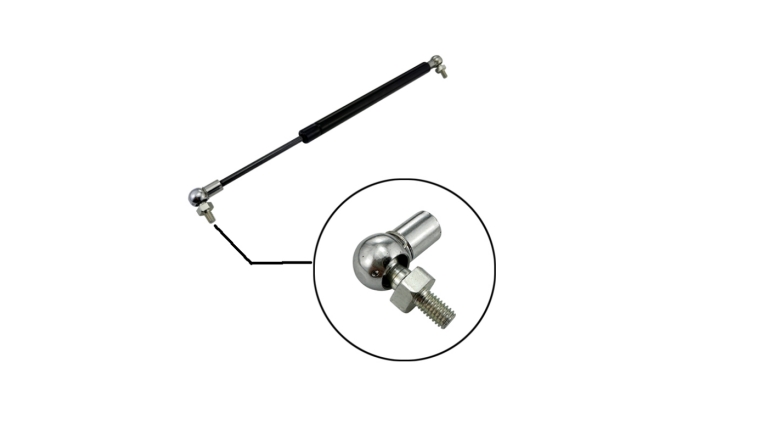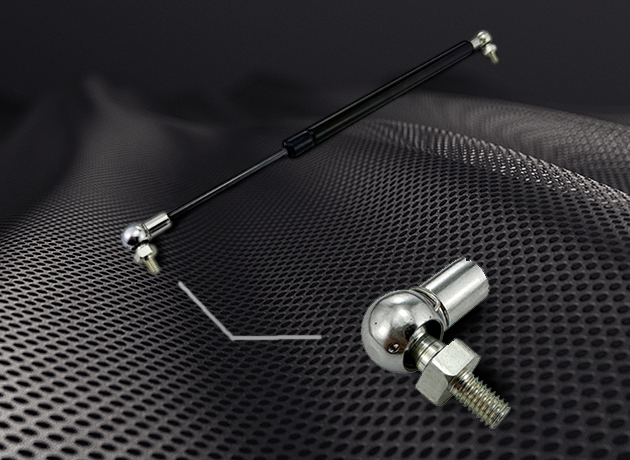Gas springs are essential components in various industrial, automotive, and furniture applications. Their primary function is to provide controlled motion in systems, offering smooth and effortless lifting, lowering, or holding of loads. However, for gas springs to perform optimally and fit specific applications, selecting and customizing the correct fittings is crucial. In this article, we explore the importance of custom gas springs, and how to select and tailor them for your unique needs.
Gas Spring Fittings
Gas spring fittings refer to the connectors or attachments used to join gas springs to the moving parts they support. These fittings come in various shapes and designs, depending on the type of gas spring and the intended application. Common fittings include ball joints, clevises, eyelets, threaded ends, and specialized brackets. Each fitting plays a vital role in ensuring that the gas spring works effectively and safely within its designated system.
Importance of Fittings in Gas Spring Applications
The fittings used on gas springs are not just functional add-ons. They have a significant impact on the overall performance and reliability of the gas spring system. The right fitting ensures:
- Optimal load distribution
- Precise alignment
- Ease of installation and maintenance
- Improved safety
Types of Gas Spring Fittings
Selecting the correct gas spring fittings depends on the nature of the application, the load requirements, and the environment in which the gas spring operates. Let’s examine the most common types of gas spring fittings available for customization.
Ball Joints: Ball joints are commonly used in automotive applications (such as car hoods and trunk lids) and furniture, where controlled angular movement is necessary.
Clevis Fittings: Clevis fittings are widely used in industrial machinery, aerospace applications, and agricultural equipment.
Eyelets: Eyelets are commonly found in automotive tailgates, medical equipment, and adjustable chairs.
Threaded Ends: Threaded ends are popular in industrial settings where gas springs need to be precisely adjusted or positioned.
Brackets: Brackets are widely used in construction equipment, HVAC systems, and heavy machinery.
Customizing Gas Spring Fittings
Choosing the right gas spring fitting is only part of the equation. Customization is often required to ensure that the gas spring system performs optimally for the intended application. Here are some critical aspects of customizing gas spring fittings.
1. Material Selection
Gas spring fittings can be made from a variety of materials, each with its own set of properties.
Steel: Known for its strength and durability, steel is the go-to material for heavy-duty applications.
Stainless Steel: Offers superior corrosion resistance, making it ideal for marine or outdoor applications.
Aluminum: Lightweight and corrosion-resistant, aluminum is used in applications where weight reduction is crucial.
Plastic: Some fittings are made from high-strength plastic, suitable for light-duty applications in non-corrosive environments.
2. Surface Coatings and Treatments
Fittings can be further customized through surface treatments and coatings. These treatments enhance the durability, corrosion resistance, and overall appearance of the fittings.
Zinc plating: Provides a protective layer to prevent rust and corrosion.
Powder coating: Offers a durable and aesthetic finish, available in various colors.
Anodizing: Common for aluminum fittings, anodizing enhances corrosion resistance and adds a decorative finish.
3. Load and Motion Considerations
Customization involves ensuring that the fittings can handle the required load and movement. For example, fittings in high-load applications may need to be reinforced or manufactured with higher-grade materials. Likewise, dynamic systems may require specialized fittings that can accommodate angular or rotational motion without binding.
4. Thread Customization
Thread customization is crucial when the gas spring needs to be integrated with specific components. Both the pitch and size of the threads can be customized to ensure a perfect fit, allowing for seamless installation in the target application.
5. Environmental Factors
For gas springs used in extreme environments (e.g., high temperatures, corrosive atmospheres, or underwater), fittings must be customized to withstand these conditions. For example, marine applications often require stainless steel fittings with additional corrosion-resistant coatings.
Selecting the Right Gas Spring Fitting for Your Application
Choosing the right gas spring fitting depends on several factors, including the application’s requirements, environmental conditions, and desired lifespan. Here are some steps to guide you through the selection process:
- Define the Application Requirements
- Consider the Environment
- Determine the Customization Needs
- Work with Trusted Manufacturers
Conclusion
Gas spring fittings play an integral role in ensuring the efficient and safe operation of gas springs in various applications. However, customization is often required to meet the precise demands of industrial, automotive, or specialized systems. By carefully selecting and customizing gas spring fittings, you can enhance the performance, safety, and longevity of your gas spring system.

